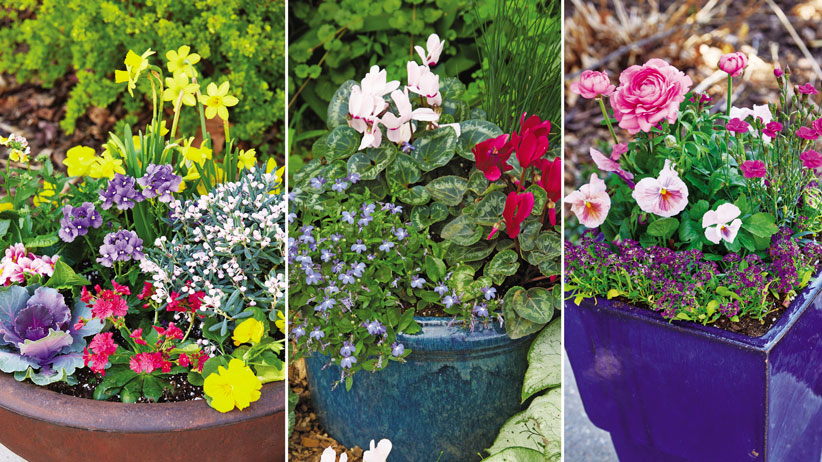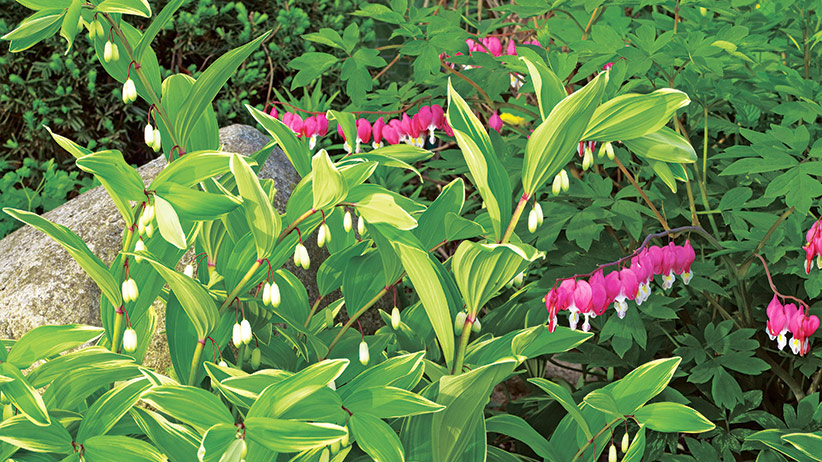Tips from our readers for gardening on a budget
If you’re trying to save money gardening, there are lots of things you can do. Composting, seed saving and dividing perennials are some great solutions. But what else can you do to pinch a few pennies? We asked our readers how they stretch their garden dollar and they had some great ideas! Take a look at their tips to see how to grow a beautiful garden without busting your budget.
You Might Also Like:
Submit a Garden Tip!
DIY Garden Project Ideas
The Best of Garden Gate Reader Tips
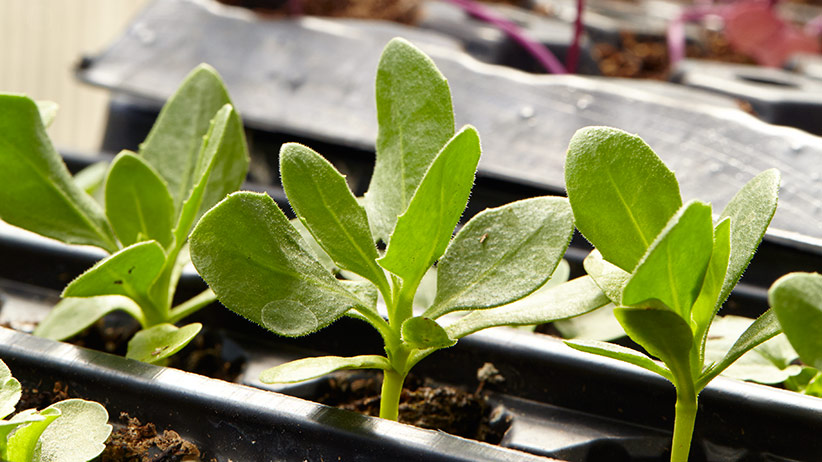
Host a seedling swap
Sharon and her friends pool their resources and coordinate who will start which vegetable seeds each year. One person might start all the beefsteak tomatoes and the eggplants, another might start the cherry tomatoes and cucumbers. In spring the friends meet up to distribute the seedlings, and everyone gets just what they need.
Tip submitted by Sharon Moore, IL
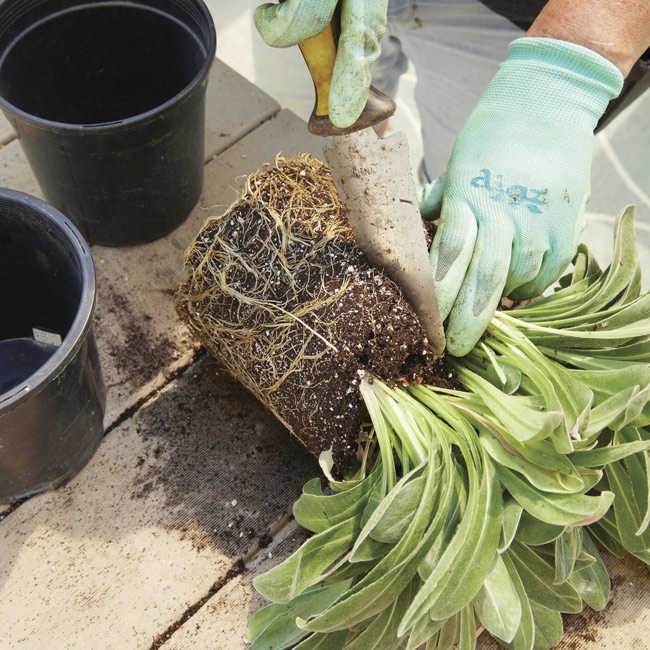
Cut the cost by dividing plants with friends
Debi and her friend look for large perennials with potential for division at the garden center. Then they split the cost and the plants! The perennial bachelor’s button (Centaurea montana) above has multiple crowns in one pot so it’s easy to pull or cut apart. But for a plant with a dense root ball and a single crown, you may need to use a soil knife to cut it into pieces and get the divisions you want.
Tip submitted by Debi Jones, TN
“I combine a broken floor lamp and a broken umbrella to make a ‘new baby plant shade structure’. After a couple of days, the plants can take our Southern sun.”
Tip submitted by Brenda Lantz, OK
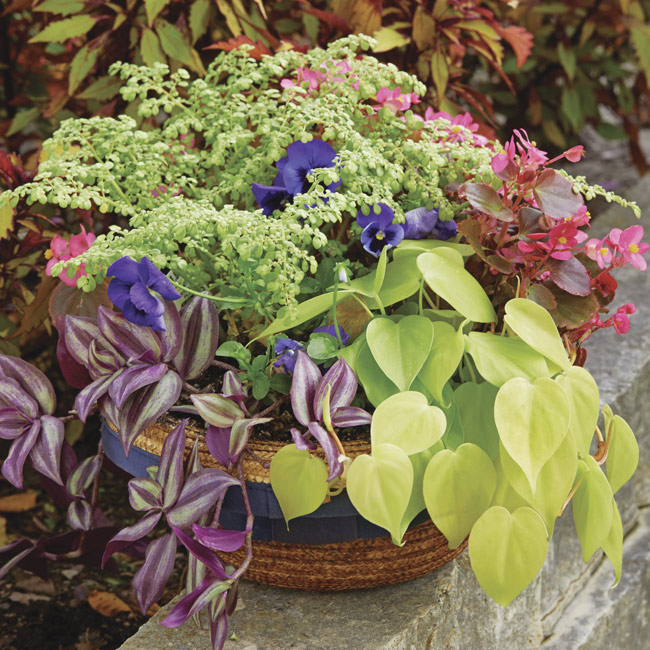
Grow your own container plants
Instead of buying “spillers” to put in her shade garden urns, Joy uses easy-to-propagate houseplants, such as philodendron (Philodendron cordatum), inch plant (Tradescantia zebrina) or variegated ivy (Hedera helix ‘Variegata’). When the season is winding down, she repots the smaller plants and takes cuttings from large ones, to grow in a vase of water over winter. In early spring she plants them up to get ready to go outdoors.
Tip submitted by Joy Haff, KS
You Might Also Like:
The Best of Garden Gate Tips Book
How to Propagate Rex Begonias
Best Foliage Plants for Containers
Make the most of volunteer tomatoes
During the harvest season, Jayme tosses cracked or damaged cherry tomatoes in a 2-foot-square area of the garden that she reserves for this purpose. Then in spring, instead of tilling she keeps an eye out for the volunteers to sprout. When the seedlings are 3 to 5 inches tall, she carefully digs them up and replants them where she usually grows tomatoes.
Tip submitted by Jayme Dare, TN

Floral bucket bargain
To save on the cost of containers, Martin checks with local florists to see if he can purchase a few of the buckets they use to store cut flowers. They’re usually quite willing to sell them for a small fee. He drills several holes in the bottom of each container to let water drain. Martin has used these long-lasting practical containers for growing peppers in the greenhouse, keeping mint contained, growing cuttings and for trees he’s started from seed.
Tip submitted by Martin Charlesworth, Shropshire, UK
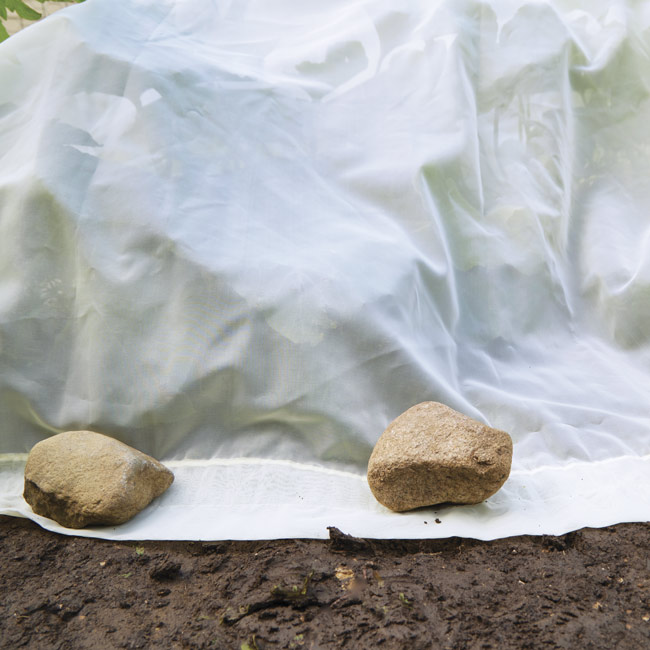
Recycle old curtains in the garden
Retired sheer curtains get new life in Pat’s garden. She uses the panels to protect vegetables from pests, such as cabbage moth or deer, and to keep birds out of the fruit on her blueberries and pear and cherry trees. They’re lightweight and won’t crush foliage, but sun and water can still get through. She even sews scrap ribbons 2 to 3 feet apart around the edge of each shear so she can easily tie a few together on a long row of vegetables or secure one around a tree or shrub to protect the fruit.
Tip submitted by Pat Kerr, Ontario, Canada
Repurpose empty mulch bags
Katy has found that empty mulch and soil bags are convenient for collecting weeds and can be used as a kneeling pad either singly or by folding them into fours — the more you have, the cushier the kneeler. Need a waterproof seat cover or trunk liner? Mulch bags to the rescue. And when friends are sharing plants, it’s easy to slip a few divisions inside the bag for easy transport.
Tip submitted by Katy Sullivan, NY
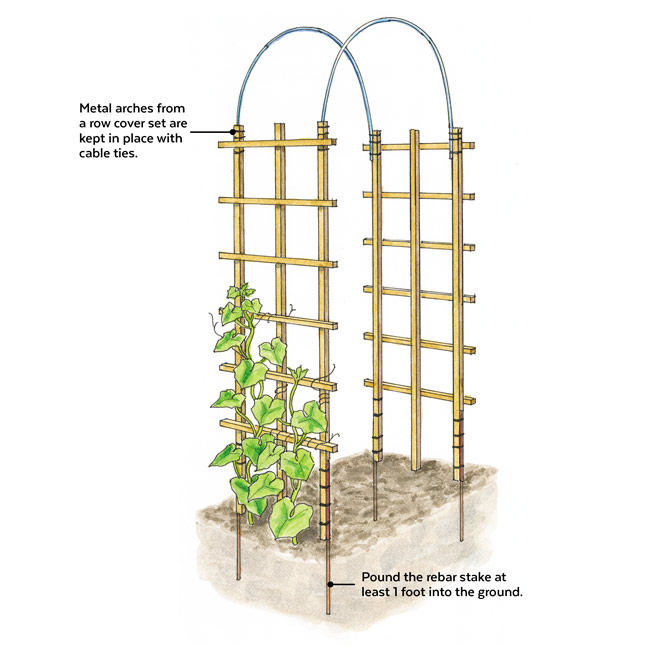
DIY Garden arbor
Garden arbors can be expensive, so Christine makes her own with a few sturdy 5- to 6-foot-tall trellises from a discount store, some rebar and a couple of metal arches from an old row cover set. To keep the trellises stable in her windy area, Christine pounds a couple of 2- or 4-foot-long rebar stakes into the ground where the trellis feet will go and secures each trellis to them with cable ties. The metal arches go on top and are secured in place with several cable ties. One of Christine’s arbors arches over the path in her raised vegetable beds and it’s carried the weight of the cucumber vines with no problem.
Tip submitted by Christine Cox, MA
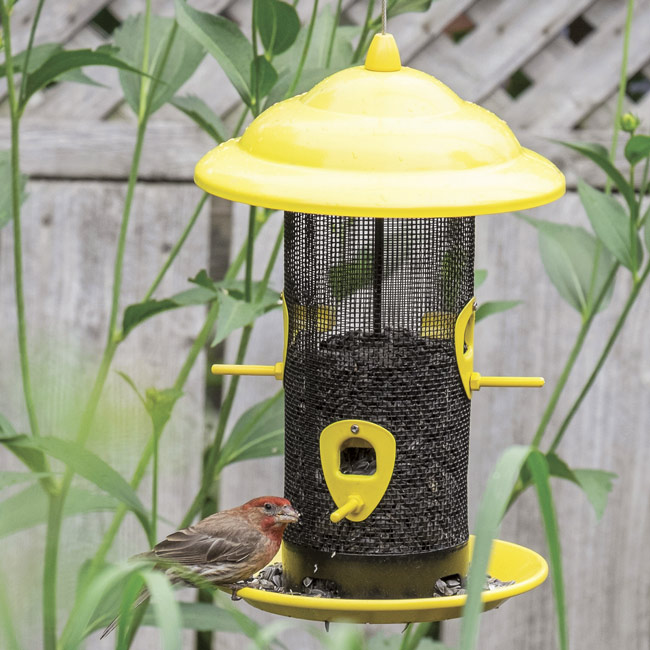
Self-sown bird feeder
Sheryl likes to fill her bird feeder with black sunflower (Helianthus annuus) seeds and strategically hangs it an area of the garden she calls the “wildflower area.” It’s inevitable that some of the seeds fall to the ground and sprout. By letting them grow to maturity, Sheryl’s winged visitors can take advantage of the extra seeds from the flowers, and the plants fit right in with her casual border.
Tip submitted by Sheryl Clifton, VA
You Might Also Like:
Best Plants with Berries for Birds
How to Attract More Birds to Your Garden
6 Plants Birds Love
Make your own compost blend
For a quick and easy compost, Jeanne runs all of her fruit and vegetable scraps through the blender, then pours the nutrient-packed liquid in different areas of the garden to help feed her plants and the soil.
Tip submitted by Jeanne Pavero, DE
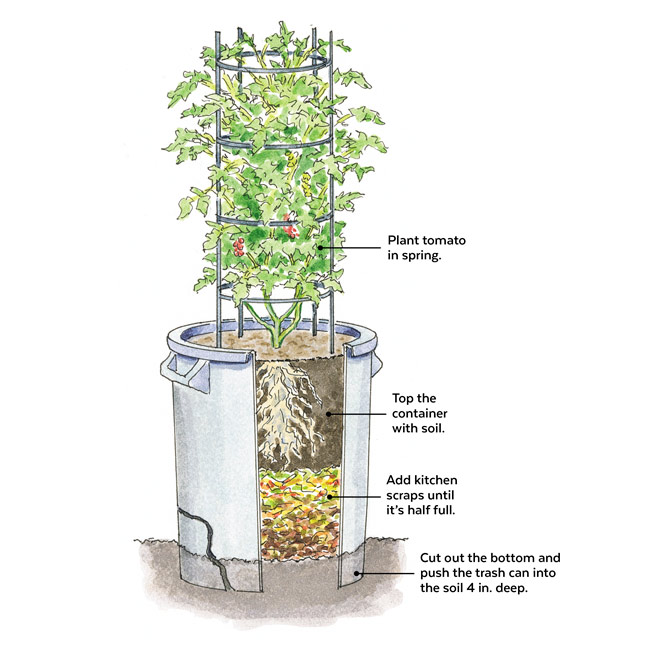
Repurpose a damaged trash can into a planter
Vieve makes good use of an old cracked trash can: She cuts out the bottom and places the cut end in the soil 4 inches deep. During winter, she tosses kitchen scraps (no meat or oils, as these attract animals) in the can until it’s half full, then in spring fills the rest of the can with soil. Vieve plants her favorite tomato, ‘Juliet’, in her clever compost container, but any plant will work. The kitchen scraps at the bottom break down and feed the plant throughout the season. In fall, she empties the container into the garden to help build the soil and starts the process over again.
Tip submitted by Vieve Voss, IA
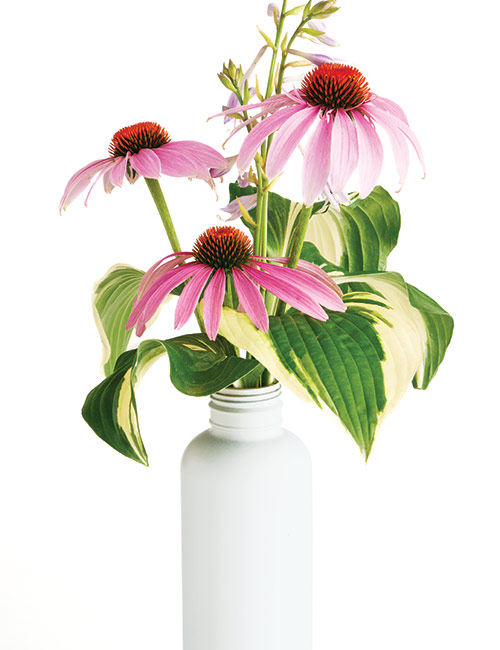
Upcycle a glass bottle into a vase
If you’d like to take an arrangement as a hostess gift or give a get-well pick-me-up, Marylou has a great solution. To upcycle them, she cleans out glass bottles from soda, iced coffee or kombucha, and spray paints them matte white or pale gray to create a simple vase. Then she fills them with flowers and foliage plants from her garden, and the hand-picked bouquets are always a hit.
Tip submitted by Marylou Schoep, KS
Save water with a moisture gauge
Instead of wondering when to water, Ellen purchased a Soil Master™ moisture and pH gauge. Just insert the prongs into the garden soil or potting mix, and the dial lets you know for sure when it’s time for a visit with the hose. A flip of the switch and it provides pH levels, so you’ll know if any amendments are needed. Ellen says that this tool has definitely saved her time and water.
Tip submitted by Ellen Hull, IA
“I cut a worn outdoor carpet into strips the width of the vegetable garden paths. They allow water to pass through, keep weeds down and last a long time.”
Tip submited by Karen Weir, TX
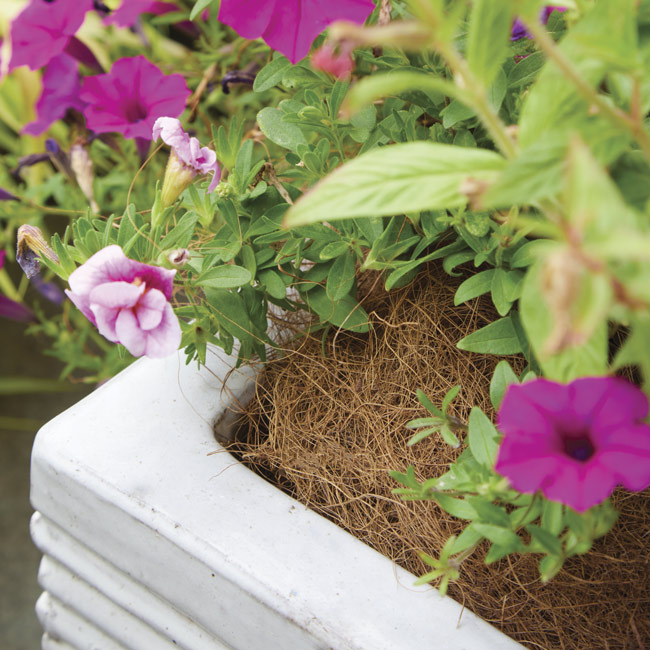
Get more from your hanging basket liners
Coir hanging basket liners can last for several years, but once they start looking thin and shaggy, Melissa repurposes the liners as mulch in her containers and around strawberry plants.
Tip submitted by Melissa Kitchens, MS
You Might Also Like:
Are You Using the Right Type of Mulch?
Types of Hanging Basket Liners
How to Grow Strawberries











